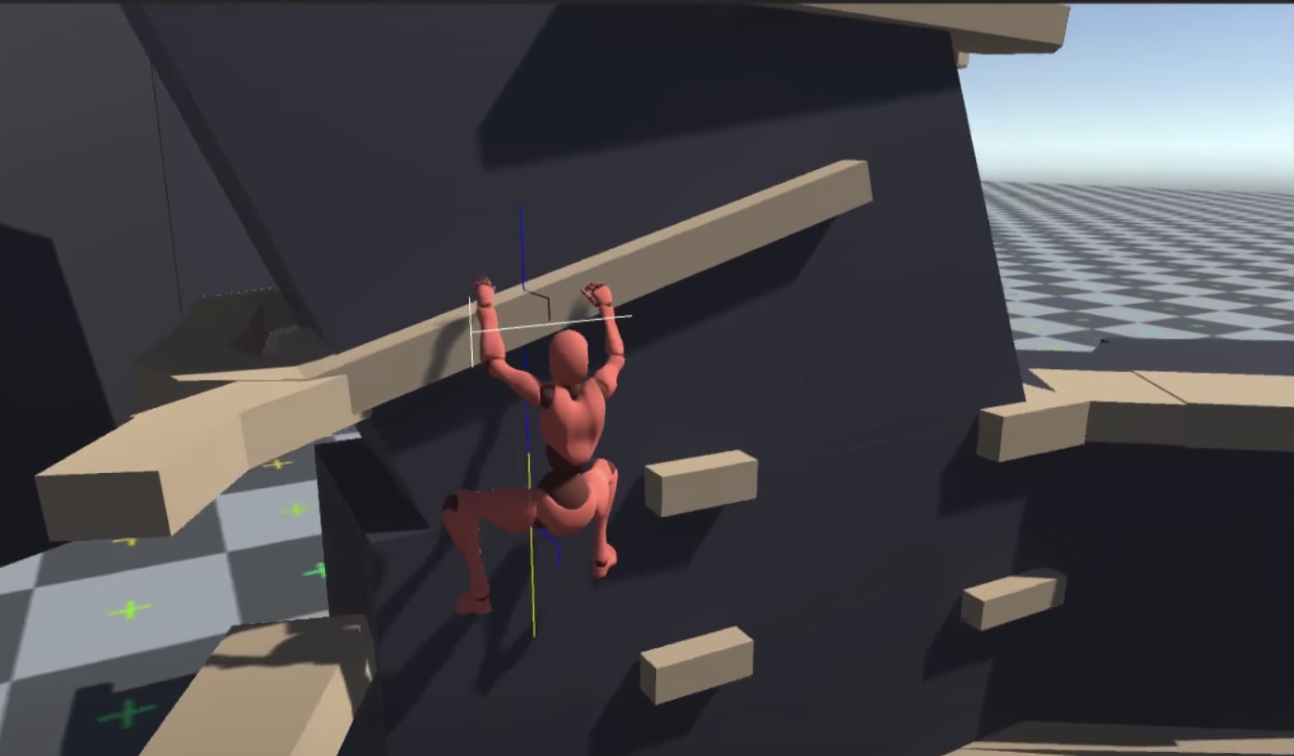What are affordances and how can they Improve Player Experience?
An Affordance in simple terms is a clue as to what actions are possible in order to use something. For example, wheels on a bike or the handle on the door give you an affordance as to how to use it. These are simple examples but games can be complicated to understand with their changing states and different play styles and controls.
"...the term affordance refers to the perceived and actual properties of the thing, primarily those fundamental properties that determine just how the thing could possibly be used. [...] Affordances provide strong clues to the operations of things. Plates are for pushing. Knobs are for turning. Slots are for inserting things into. Balls are for throwing or bouncing. When affordances are taken advantage of, the user knows what to do just by looking: no picture, label, or instruction needed." (Norman 1988, p.9)
Affordances can include:
A range of actions that can be taken for example moving, jumping, running, and interacting with objects or NPCs.
A range of positive results of those actions such as acquiring new items.
Any limitations on these actions due to game rules or other constraints.
Mario
Even a game as straightforward as Mario is full of affordances.
You start on the left side of the screen with lots of space on the right. This is a clue to move rightwards.
The angry eyes of the Gomba tell you its an enemy
The Gomba’s aggressive movement toward you along the floor tells you to avoid it. Forcing you into action by backing you up into a corner unless you jump over it.
The floating boxes give you a clue you can reach up there somehow.
Mushrooms teach you about power-ups.
The green pipes of different sizes tell you that you can jump in a dynamic way
This all adds up to a kind of non-variable tutorial level that is designed to teach you the knowledge you will need for the entirety of the game. This is important as the game is designed to extract every bit of value out of these core mechanics.
The complexity of modern games
As games become more complex users need clear affordances as to what is possible. Common examples in games might be different coloured ledges or rocks to give you a clue as to where to climb or jump. Games being software have the same benefits as other digital objects/interfaces namely that their affordances are malleable and can adapt to the person interacting with them. So affordances in games don’t have to be fixed but can be dynamic and malleable.


Are There Different Types of Affordances?
Not all affordances are the same and it’s a good idea for designers to understand which ones to use and when to use them.
1) EXPLICIT AFFORDANCE
Similar to perceptible affordance, explicit affordance is the clear hint given by language or physical of the object. For example, a button that says ‘Click me’ is a great example of both language and physical cues. The button’s raised appearance indicates the possibility of clicking and so does the ‘Click me’ text. It’s obvious. Language plays such an important part in digital interfaces. Another example that’s a little more complicated is the input field that asks you for your ‘Full name’ and affords to enter your name into it. Language provides clear guidelines and explicitly spells out directions.
2) PATTERN AFFORDANCE
A pattern affordance is an affordance set out by conventions. A great example would be a logo that’s at the top left corner of a webpage being clickable and takes you back to the home screen. It’s a pattern we see everywhere and modern interaction design is full of established patterns like this. Another established UI pattern is how settings are represented with a gear icon.
3) Cultural Affordances
Cultural affordances can be a great shorthand to communicate to certain player demographics. But Cultural affordances don’t always translate to other demographics. Using a magnifying glass as a search icon could be understood by some demographics of users but others might interpret it as a ping-pong padel or a zoom icon instead. You can’t assume tropes such as zombies or vampires will be understood universally. Getting this wrong can cut down on the potential reach of the game.
4) Hidden Affordances
In video games, hidden affordances could be easter eggs or loot cases for users to discover by trial and error. These affordances are often used as bonus content or subtle nods to dedicated fans who take the time to look beyond what’s directly in front of them. A good example of this might be the Korok Seed Locations - The Legend of Zelda: Breath of the Wild
5) False Affordances
False affordance in the digital space affords something else that is unexpected. This could be deliberate or accidental. A broken website or a button that does nothing could be examples or a cultural affordance that does not translate to the user. In games, this could be something hidden in plain sight or a door that won’t open invisible walls, and weapons you can’t pick up can be pain points for the player. You encourage users to explore and find hidden items they will run into some false affordances with no items or easter eggs.
6) METAPHORICAL AFFORDANCE
Skeuomorphism relied heavily on metaphorical affordances, examples of this could be maps, shopping carts or baskets, weapons and health icons, etc. Take the concept of email for example. Its roots are in the metaphor of a physical letter; its icon is usually an envelope. It’s a great example of metaphorical affordance.
7) NEGATIVE AFFORDANCE
Negative affordance could be an inactive button or a link that is greyed out to indicate a negative state. This can get tricky if the button is linked to something else or if the user has to do something first. For example, if the user hasn’t filled everything out everything on a form yet. The button state could appear inactive it needs to be communicated as to why the user can’t move on and what they need to do for the bottom to become active. Be careful with this one.
8) Inferred Affordances
Inferred affordances are those which you have to assume are there, but aren’t directly seen. This could be used as environmental story telling could be a powerful tool for creating the illusion of depth and world-building. The player is left wondering what happened over here before they got to this point.
9) Systemic Affordances
Affordances are not just good for items or actions but can also be used to communicate the game’s systems. Systemic affordances help players to pick up on game systems, mechanics and rules. While this concept may seem simple at first glance, it can be used in very complicated settings. Each game has its own set of rules and ways of playing. Not to mention the metagame. Some rules are simple to understand but can become very complicated so It is important for this to be communicated so players can formulate strategies and tactics.
Age of Empires for instance has cavalry that s very strong against archers but weak against infantry because of game system affordances.
Conclusion
Affordances are a crucial part of how games work as they allow developers/designers to improve the player experience by clearly communicating what users should and can do as well as is possible in situations. They also help to streamline the learning curve and communicate the game’s systems and mechanics. By implementing affordances, game designers are able to create a game that is easy to play without sacrificing the depth of gameplay.

